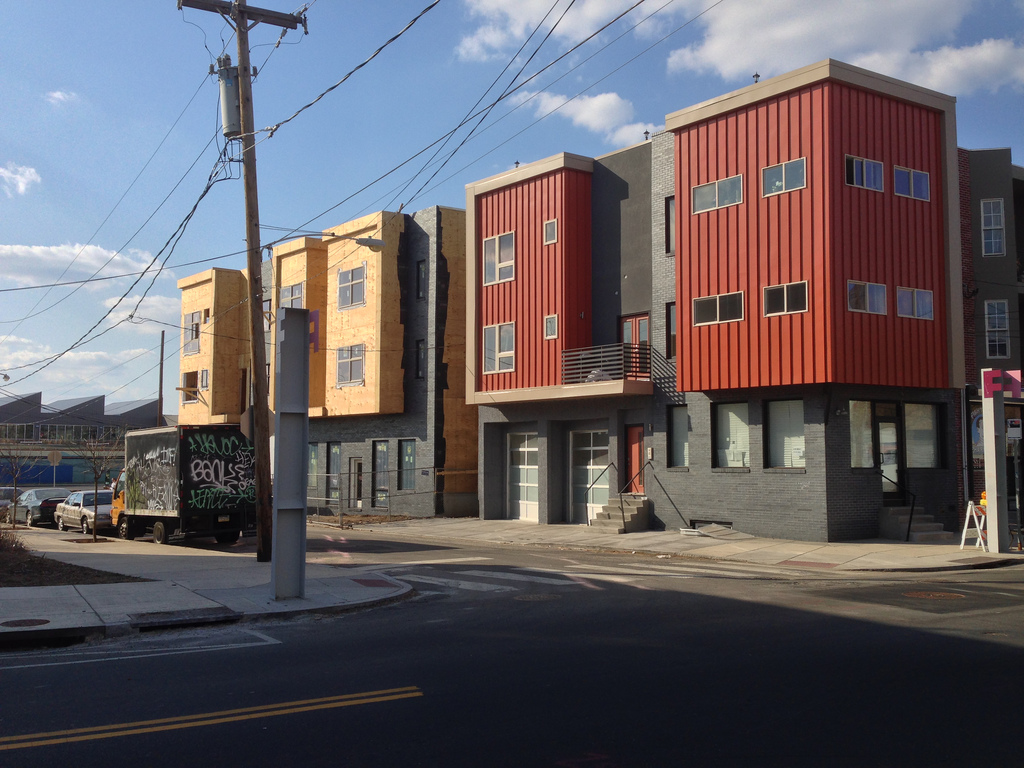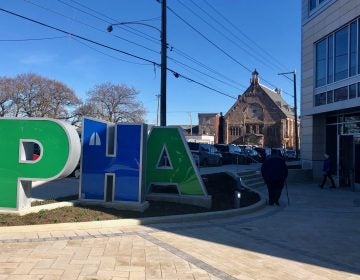Inconclusive Zoning: Planning Commission not sold on changes to affordable housing bill

The inclusionary zoning bill that City Council spent all autumn crafting now appears to have morphed into what critics say would essentially be an impact fee on Center City development. In advance of November’s Planning Commission meeting, Councilwoman Maria Quiñones-Sanchez, the bill’s sponsor, circulated amendments that would radically reshape the legislation.
Neither developers or civic associations are happy with the changes. And on Tuesday, the Planning Commission decided the bill needed more work and voted to place a hold on it.
The consequences of that decision are slight — the commission is only an advisory body — but it signals that the bill is facing more serious headwinds than many observers anticipated. The hold vote will not prevent the City Council Rules Committee hearing on the bill scheduled for Monday, but it could give cover to any council members who feel pressure to vote against it.
Sanchez herself attended the commission meeting, and passionately made a case for the bill as amended.
“I don’t think that more time will change minds,” said Sanchez. “I feel confident in our ability to come back and address any problems. When something isn’t perfect we amend it and tweak it. But more time won’t get us better ideas. We won’t be able to convince everyone. This a step in the right direction.”
The original bill would have required any new development in Philadelphia larger than nine residential units to set aside 10 percent of the units as affordable units. Although a percentage of them could be covered by a payment into the city’s Housing Trust Fund or offered off site, some of the units had to be interspersed throughout the building. That’s why the legislation is described as a “Mixed-Income Housing Program.”
The amendments Sanchez is now offering would change all that. Developers are now allowed to opt out of on-site development completely in exchange for paying into the trust fund. The bill originally would have covered the entire city, offering different affordability limits in Center City and the rest of town. But now the bill only applies to high-density zoning districts (RM-4, RMX-3, CMX-3, CMX-4, and CMX-5), which are concentrated in Center City, University City, and along a few major thoroughfares in other neighborhoods.
Neither the original bill nor this amended version would have provided a significant number of affordable units for the hundreds of thousands of low-income city residents who fall below the poverty line. But, as amended, it could potentially reach more poorer residents by routing more money to the city’s housing trust fund which can, in turn, be utilized by organizations that serve Philadelphia’s poorest.
“It’s very, very difficult for the private market, from the revenue they are making out of the market rate sales, to subsidize that low,” said Anne Fadullon, director of Planning and Development for the city, during the debate at the commission. “That’s why you have people saying that, at really lower income levels, the economics don’t work. That’s why you have the option of the Housing Trust Fund, which is targeted at those low-income levels.”
Several developers contacted about the amended bill said they believed that most people in their business would simply pay into the trust fund, if they chose to build in the affected zoning categories at all.
But many argued that they would simply avoid those denser zoning categories all together, because the payments-in-lieu are staggeringly high. For each dwelling unit in the housing complex, developers will have to pay between $11,000 and $30,000 depending on the size of the unit and other factors. A building of 100 studio apartments, for example, would require a $1,120,000 payment into the trust fund.
“This is a mixed-income housing bill that has zero hope of building any mixed-income housing,” said Leo Addimando, the treasurer of the Building Industry Association (BIA). “It’s going to really depress residential in Center City so you will have people looking to build more density in the neighborhoods. It will exacerbate some of the issues that were the genesis of this bill: displacement, gentrification, people being priced out of neighborhoods they grew up in.”

There are many other changes to the inclusionary zoning effort as well. The amendments would also scrap many of the zoning sweeteners offered in the legislation, which were meant to offset costs to developers by allowing them to build denser and taller buildings. Many civic associations bridled at these suggestions however, and they were cut. Now the bill offers floor-to-area (FAR) ratio incentivizes, patterned on the existing voluntary mixed-income housing bonus.
Addimando said the builders proposed affordability incentives that would have allowed more lot coverage, higher densities, less parking, and slightly taller building in many residential zoning categories. “Neighborhood associations and district city council people didn’t want the de facto upzoning that those bonuses would have created,” said Addimando.
But neighborhood groups aren’t happy with the amendments either.
Judith Applebaum of the Crosstown Coalition, an umbrella group covering many of the city’s more sophisticated and well-resourced community groups, spoke for giving more time to consider the bill. They fear the FAR bonuses will push developers to seek height variances at the Zoning Board of Adjustment, which they are likely to get under a mandate to produce affordable housing.
“From the perspective of the Crosstown communities the most unsettling provisions of the bill [are those] that discard the dimensional restrictions found in the 2012 zoning code,” said Applebaum. “These are not tweaks. They are substantial and material changes from high density to super density.”
Affordability limits have been altered as well. For sale, the units would have to be affordable for “low-income” buyers at 70 percent of area median income (AMI), around $58,240, or moderate-income buyers at 80 percent of AMI. For rental units, the affordability limits would have to be 50 percent of AMI, about $41,600, for low-income tenants and 60 percent for moderate income.
The Philadelphia Chinatown Development Corporation testified against the amendments before the Planning Commision on Tuesday and the Delaware River Waterfront Corporation asked for more time to study the bill. While no developers offered testimony, their opposition to the bill is well documented.
Both Beth McConnell, policy director of the Philadelphia Association of Community Development Corporations, and Rasheedah Phillips of Community Legal Services testified on behalf of the bill. Both spoke about the pressing need for affordable housing in the city, especially given the city’s subsidization of development.
“Through the ten-year tax abatement we are subsidizing rising housing costs by giving developers this incentivize with zero commitment to affordability,” said McConnell. “It is a policy of inequality that Philadelphia subsidizes market rate development through the abatement and turns away families in search of an affordable place to live.”
But Planning Commissioner Patrick J. Eiding, president of the Philadelphia AFL-CIO, said the bill did not seem ready for primetime. He introduced the motion to put it on hold. Six other commissioners sided with him, and two opposed the motion.
Dear reader, your support is essential for PlanPhilly’s independent, watchdog coverage. Please help us continue providing the local public interest news that you value in 2018 by making a tax-deductible donation during our once-a-year membership drive. Thank you for eleven great years of coverage on the built environment and counting!
WHYY is your source for fact-based, in-depth journalism and information. As a nonprofit organization, we rely on financial support from readers like you. Please give today.







